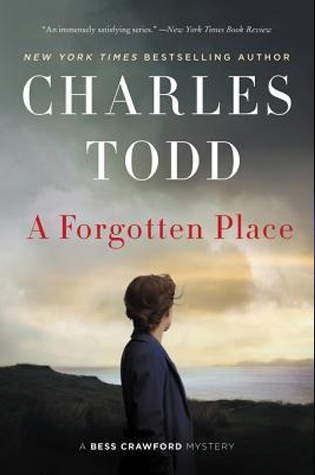I received this book for free from in exchange for an honest review. This does not affect my opinion of the book or the content of my review.

The Last Camel Died at Noon
by
Elizabeth Peters
amateur sleuth, historical mystery in a Kindle edition that was published by Grand Central Publishing on February 10, 2010 and has 400 pages.
Explore it on Goodreads or Amazon, Audibles.
Other books by this author which I have reviewed include Lord of the Silent, The Golden One, Children of the Storm, Tomb of the Golden Bird, Guardian of the Horizon, The Serpent on the Crown, A River in the Sky, The Painted Queen, Crocodile on the Sandbank, The Curse of the Pharaohs, The Mummy Case, Lion in the Valley, The Deeds of the Disturber, The Snake, the Crocodile, and the Dog, The Hippopotamus Pool, Seeing a Large Cat, The Ape Who Guards the Balance, Guardian of the Horizon, A River in the Sky, He Shall Thunder in the Sky, The Falcon at the Portal
Sixth in the Amelia Peabody amateur sleuth in an historical mystery series and revolving around an overly assertive feminist archeologist and her renowned husband. The focus is on a Lost City and a lost couple, Willoughby Forth and his wife.
In 1991, The Last Camel Died at Noon was nominated for the Agatha Award for Best Novel.
My Take
This was an unexpected diversion from Egypt into the Sudan and an Allan Quartermain-style tale that begins ahead of itself. Yep, Peters drops us into an advanced bit of action and then takes us back to the start. And it’s allowing Peabody to live an adventure straight out of H. Rider Haggard’s books, lol, with all the floridity of Victorian prose.
It’s too true. The servants do know everything, lol.
Why would being fat hinder one’s intellect?
Peters uses first person protagonist point-of-view from Peabody’s perspective. Lol, it’s not hard to keep up with everything going on, as Peabody just has to be in on everything.Thankfully, Emerson and Ramses are just as fascinated with understanding different cultures, their psychologies, and languages as she is.
Peters does have a habit of commenting on the perniciousness of the English public school system using Ramses’ need for a balanced education. The poor treatment of women is another theme, and I can’t blame Peters for taking this up. Every mention Peabody makes about how men view women is too true, and not just back in her day. I do like her descriptions of rational dress. It’s certainly led to our blue jeans and T-shirts. I can’t help but wonder what Peabody would make of today’s fashions . . .
I will admit that Peabody is an aggressive know-it-all who doesn’t hesitate to advise everyone on how to do anything. She is so annoying! And yet, she does have a good heart. I do have to laugh as she berates Ramses for doing what she does.
Betrayals abound and there’s action a’plenty with the Emersons tugged back and forth. There were a few events that had me wondering what Peters was thinking. I mean, does Peabody really think her son wouldn’t survive in those tunnels?? Gimme a break.
Ramses is a dichotomy between fastidious and filthy, brilliant and average, tolerant and intolerant. He’s not the only dichotomy, for words are carefully chosen to explain what happened to the Forths, etc., speaking the truth but with shades of meanings.
On the negative side, Peters is quite confusing about Gebel Barkal and those comments made about the perverse Blacktower that seem to have come out of nowhere.
There’s quite a bit of history on the wars in the Middle East of the 1800s.
Like any culture, there are prejudices, greed, kindnesses, compassion, and desires with the Cush as prejudiced as the West. It’s a fascinating investigation by the Emersons (and I’m definitely including Ramses), for they are fascinated by other cultures, noting the negatives and positives of each (including their own), and they do promote knowledge as opposed to fame and fortune.
Oh, there’s power in The Last Camel Died at Noon. That of ascending a throne for political power with Peabody and Emerson wondering about the extent of the power of the city’s women as opposed to the hideous restrictions for commoners.
I wonder what happens to the girl…
The Story
Viscount Blacktower is firm in his belief that his son still lives and is insistent that the Emersons find him. His grandson, Reginald, is equally insistent.
It’s a hunt that will lead the Emersons to a Lost City intent on preserving itself yet warring between the competing priesthoods of Osiris and Amon.
It’s a point of honor now, well, okay, a need to know that pushes the Emersons into investigating the fate of the Forths.
The Characters
Amelia Peabody Emerson, a.k.a. Sitt Hakim, prides herself on her intelligence, practicality, and her medical abilities. Professor Radcliffe Emerson, FRS, FBA, LLD (Edinburgh), DCL (Oxford), Member of the American Philosophical Society, etc., a.k.a. the Father of Curses, is her equally forthright husband. The usually filthy Walter “Ramses” is their ten-year-old beyond precocious son who can speak Arabic like a native abd read three different scripts of Ancient Egyptian, Latin, Hebrew, and Greek. The cat Bastet is firmly attached to Ramses (The Curse of the Pharaohs, 2). Their home base in England is Amarna Manor in Kent. Gargery is their butler; Rose is the parlormaid and, in truth, Amelia’s second-in-command who adores Ramses; Mrs Bates is the cook; and, John is one of the footmen.
England
Walter Emerson is Radcliffe’s younger brother and as brilliant in language as his brother is in excavation. Walter married Evelyn, the granddaughter and heiress of the Duke of Chalfont and Amelia’s best friend. They now have five children: Raddie, John and William, Amelia, and the baby.
Frank Griffiths is one of Walter’s rivals. Wallis Budge works for the British Museum as the Keeper of Egyptian and Assyrian Antiquities, acquiring artifacts, usually illegally. Professor Petrie has gotten married.
The Honorable Reginald Forthright is desperate to learn the fate of his uncle. Franklin, Viscount Blacktower, is Reginald’s grandfather as well as a patron of archeological subjects. Willoughby “Willie” Forth is one of Blacktower’s sons, the heir, and an explorer who was always a few months late. Willie married Miss Wright in 1883.
Egypt
The Academy for Young Gentlemen, in Cairo, refused to accept Ramses as a student. Assouan is a depot for military supplies and commanded by Captain Pedley, an old acquaintance of Emerson’s.
By 1885, Haifa had been established as the southern frontier of Egypt. Captain Buckman is in charge. Sheikh Mahmud al-Araba is a friend of Emerson’s.
The Sudan
Emerson is convinced that the region of Napata, Gebel Barkal, near Merawi, is where the first capital of Cush is located. Meroë is the second capital (and yet Peters also makes it sound as if Merawi and Meroë are the same). Near Sanam Abu Dom, a small village, is HQ for the Frontier Field Force of the Egyptian Army commanded by General Rundle. Sheikh Mustapha abd Rabu is another of Emerson’s friends. Yussuf. Slatin Pasha, a.k.a. Rudolf Carl von Slatin, had served as governor of Darfur. Captain Griffith is in charge of the military camels.
The people on the Emersons’ excavation team at Nuri includes Mohammed, Ahmet, Kemit, and Akinidad, the latter two are of the native Nilotic peoples. The people on the Forthright team include Ahmed, who is an excellent cook, and three Nubians, including Daoud.
The Lost Oasis,
. . . a.k.a. the City of the Holy Mountain, where two princes stand by to inherit: Prince Tarekenidal “Tarek” Meraset (he’s the son of the king’s wife Shanakdakhete) and Prince Nastasen Nemareh (son of Amanishakhete, who is their Candace, their queen). Count Amenislo is one of Tarekenidal’s brothers, the son of Lady Bartare. Tabirka had been one of Tarek’s favorite brothers.
The Handmaidens of the Goddess Isis are veiled at all times and tend to patients. Amenitere, a.k.a. Princess Amenit, is the First Handmaiden. Others include Mentarit and Maleneqen. Murtek is the Royal Councillor, High Priest of Isis, and the First Prophet of Osiris. Pesaker is the royal vizier, uncle to the princes, and High Priest of Aminreh, a.k.a. Amon-Re. Nefret is the daughter of Willie Forth and his wife; Nefret is considered the reincarnation of Isis.
Guards include Captain Harsetef and his men who are claimed by the Father of Curses. The Heneshem, a.k.a. Hemet netcher Amon, has three?? tools: the Voice; the Hand, their executioner; and, the Concubine.
The rekkit are the original people of the Holy Mountain and have been enslaved by the Cush, who refer to them as rats. The Friend of the Rekkit is willing to help the Emersons escape.
1897
Kitchener is Sirdar of the Egyptian Army.
1884
This was Peabody’s first trip to Egypt. Mohammed Ahmed Ibn el=Sayyid Abdullah had proclaimed himself the Mahdi, a religious leader. His place was taken by Khalifa Abdullah el-Taashi. The Baggara were nicknamed the Fuzzy-Wuzzies for their hairstyle. General Gordon was being besieged in Khartoum. General Hicks was on his way to Kordofan in 1883.
This story is based on a legend about the sons of Cush who marched toward the setting sun. Lepsius visited the site in 1844 and is the only qualified scholar. Heinrich Schliemann discovered Troy. Ferlini brought jewelry back from Meroë 50 years ago. Zerzura is the place of the little birds. Sir Harold Carrington, a neighbor in Kent, loves foxhunting.
The Cover and Title
The cover is oranges, black, and gold. The black is the background with a two-tone horizontal striped band of orange and brown on the left and right. At the top is a testimonial and an info blurb; both in white. Below that (with a cutout on either side for the author’s name) is the author’s name in a pale embossed gold. Below that is a narrow gold band ending in arrow points with the series info in black. Below that in the bottom half of the cover is a graphic of a lonely desert in oranges overseen by a beautiful blue sky which also serves as the background for the title in white.
The title references the early part of the story when The Last Camel Died at Noon, leaving the Emersons at the mercy of the desert.


















